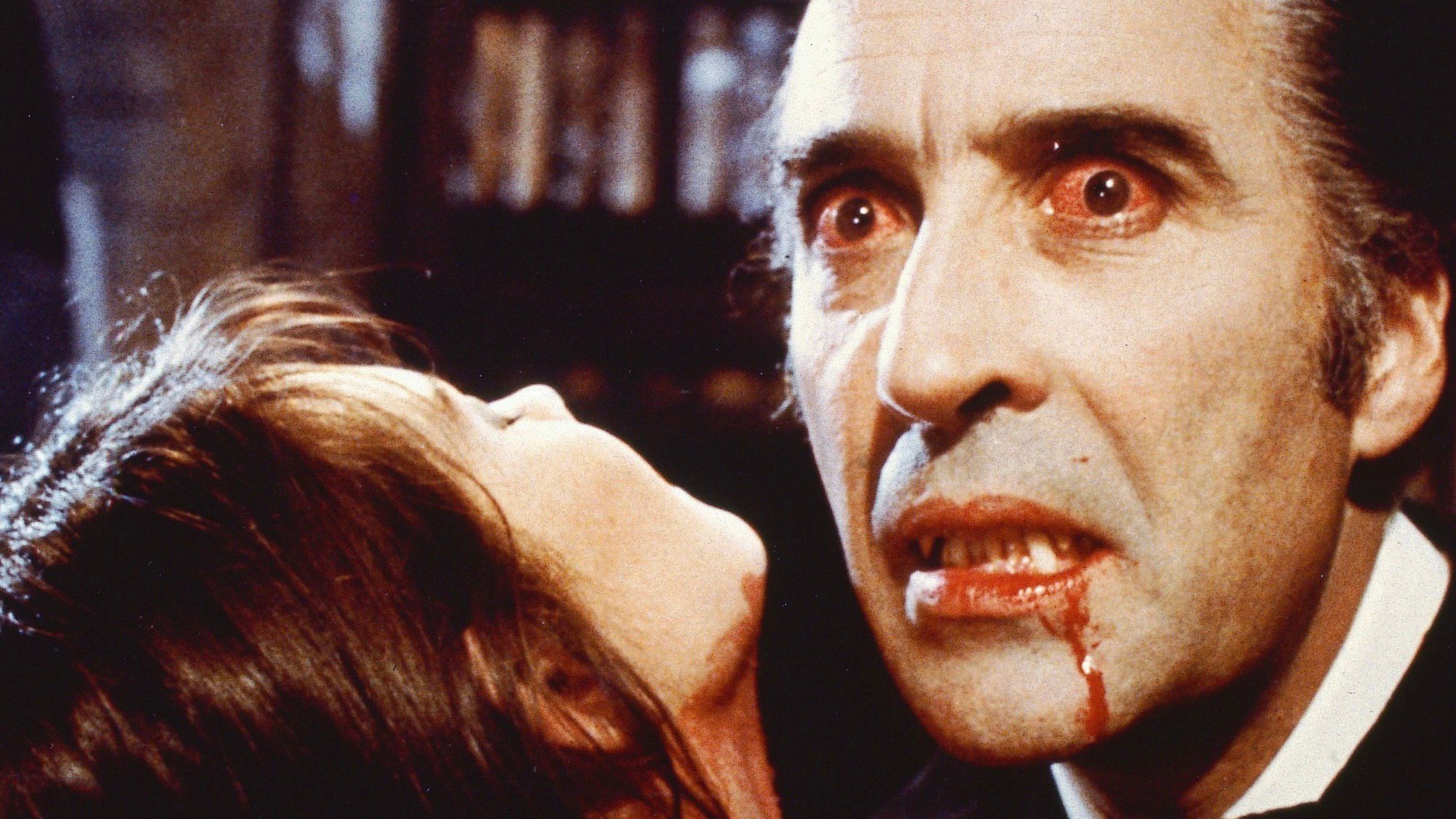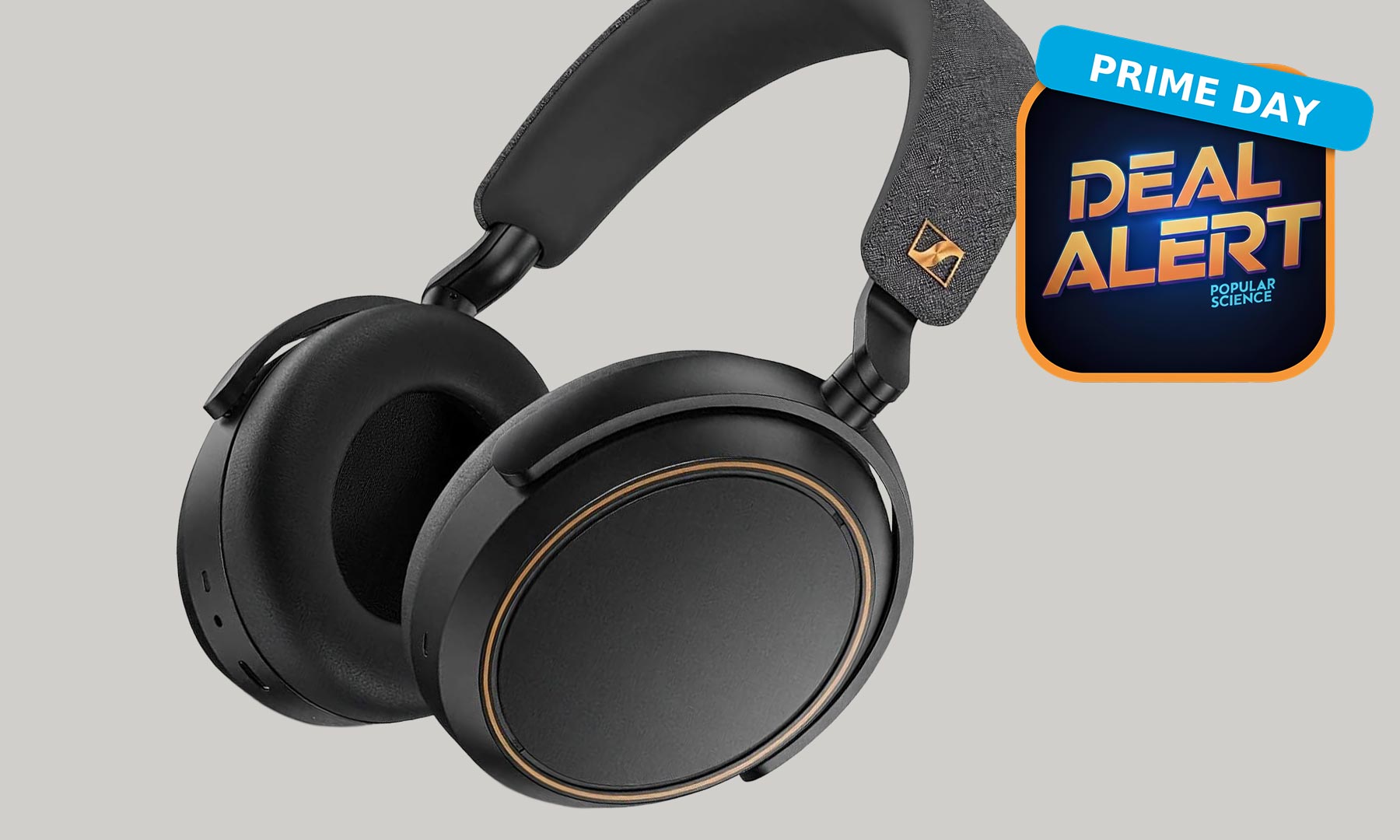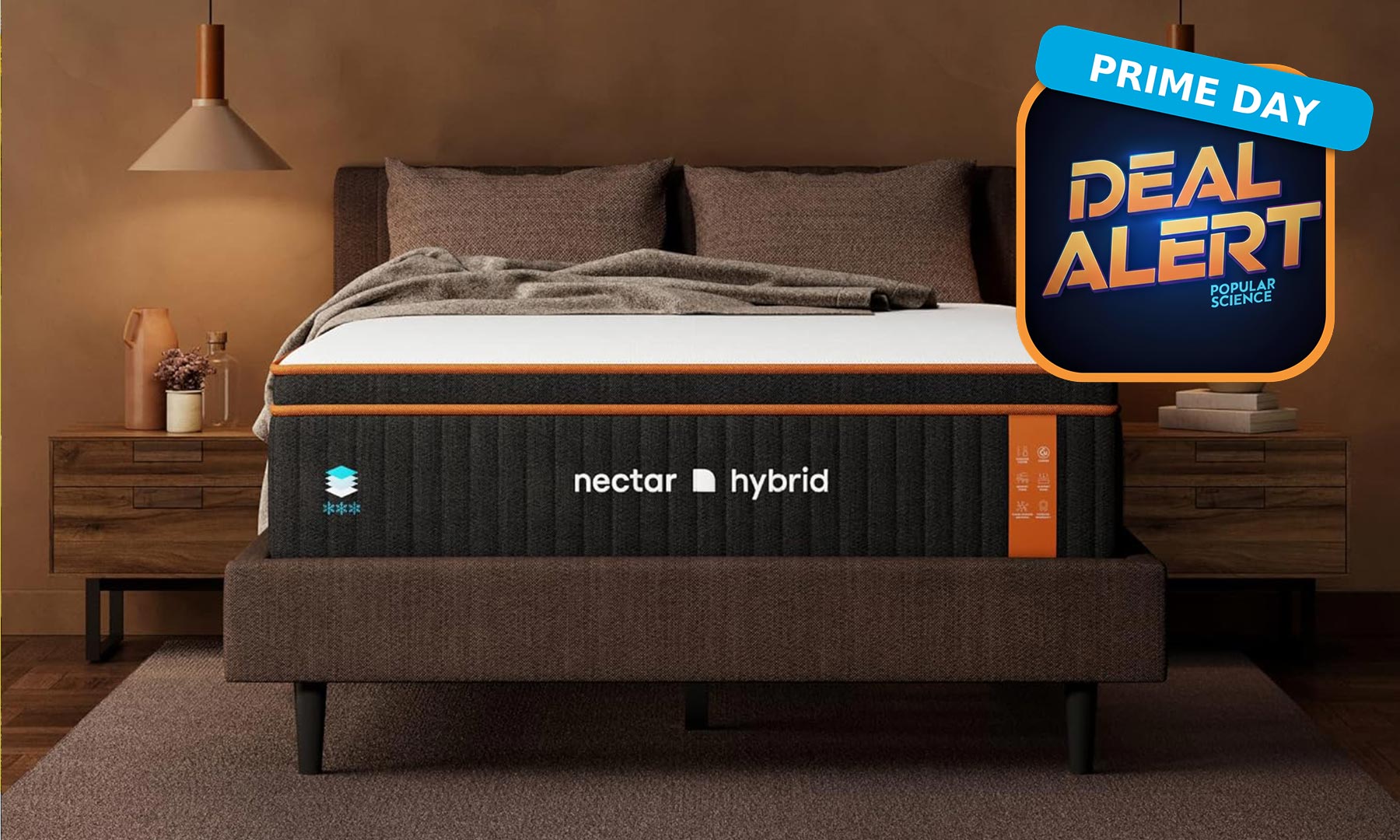It’s not too late to hop aboard the alien mothership for the sensational Apple TV+ sci-fi series.
📰 Original Source: Latest from Space.com
This article was automatically imported from our UAP intelligence monitoring network.
SkyWatchMesh – UAP Intelligence Network
UAP Intelligence Network – Real-time monitoring of official UAP reports from government agencies and scientific institutions worldwide
It’s not too late to hop aboard the alien mothership for the sensational Apple TV+ sci-fi series.
📰 Original Source: Latest from Space.com
This article was automatically imported from our UAP intelligence monitoring network.
Spirent Communications plc announced the introduction of benchmarking capabilities to the award-winning Landslide Test Solution. Cloud-Native Infrastructure Benchmarking further expands the unique capabilities of Spirent Landslide to help service providers accelerate the roll-out of cloud-native 5G standalone (SA) networks. The first comprehensive solution for benchmarking, deploying, managing, and optimizing 5G infrastructure performance to ensure networks are…
The post Network tester adds cloud-native functions for 5G standalone appeared first on 5G Technology World.
As UAP researchers and tech enthusiasts, we’re always seeking tools and resources to enhance our investigations and stay ahead of emerging technologies. Check out this resource that fellow researchers have found valuable.
→ hotel-deals
Donating blood, plasma, organs, and even full bodies saves countless lives every year. But toenail clippings could also become a life-saving body part with a new pilot study from the University of Calgary in Canada.
The team is soliciting toenail donations (sorry, only from Canadians) to study a type of cancer that arises far from our feet–lung cancer. While smoking is the largest cause of lung cancer, this aggressive form of the disease can arise in those who have never had a cigarette. One of those patients is lawyer Emi Bossio who was diagnosed at only 47-years-old after developing a nagging cough.
“I never smoked, never. I ate nutritiously and stayed fit. I thought to myself, I can’t have lung cancer,” Bossio said in a statement. “It was super shocking. A cataclysmic moment. There are no words to describe it.”
[ Related: Why do humans have toenails? Because we’re evolutionary ‘weirdos.’ ]
After giving up her law practice to focus on treatment, she found the world of Dr. Aaron Goodarzi. The biochemist is leading an interdisciplinary team of scientists at the University of Calgary that is looking at the environmental causes of lung cancer, including exposure to radon. This naturally occurring gas is odorless and colorless, but also radioactive. After tobacco smoking, radon is the second leading cause of lung cancer. Still, rules governing lung cancer screening programs in Canada can’t include radon exposure as one of the risk criteria because so few people can reliably report their radon exposure across decades the way that they can report the number of years that they have smoked tobacco.
The potential solution? Toenails. Dr. Goodarzi is currently recruiting for a larger study that could fill some crucial data gaps to estimate an individual’s lung-cancer risk due to long-term radon exposure. To achieve this, he needs Canadians’ toenail clippings.
“We’ve learned that our toenails hold long-term information about our exposure to radioactive toxicants in our environment such as radon gas. They are one of our body’s archives of past exposure,” said Goodarzi. “After you inhale radon, it quite quickly transforms into a specific type of radioactive lead. Your body treats radioactive lead from radon like it does all lead and stores it in slow-shedding tissues such as the skin, hair and nails.”
In a proof-of-concept (or pilot) study published this week in the journal Environment International, Goodarzi and co-principal investigator Dr. Michael Wieser show that measuring radioactive lead in toenails is a useful way to estimate long-term radon exposure.
“We believe we’ve discovered a reliable, quantitative way to measure long-term radon exposure at an individual level,” said Wieser, a physicist at the University of Calgary. “We used a combination of personalized radiation dose epidemiology and isotope dilution mass spectrometry to evaluate ultrasensitive measurements of the radon decay product. We tested for lead isotopes in toenail cuttings and proved they can serve as a quantitative method to reveal lifetime radon exposure at an individual level.”
The participants in the pilot study were recruited from the thousands of people already in Canada’s large Evict Radon National Study. To continue studying these effects in a bigger study, researchers are hoping to recruit up to 10,000 people from all over Canada. Study participants will need to test their homes for radon and then collect and send in their toenail clippings for analysis.
“If this validation trial works, it could transform the future landscape of cancer prevention in Canada,” said Goodarzi. “The data will form the evidence that could lead to the inclusion of more patients, whose lung cancer is not caused by tobacco smoke, in potentially life-saving early screening and diagnosis.”
In the pilot study, the team noted two in five people who develop lung cancer in Canada do not meet current screening inclusion criteria and half have never smoked tobacco at all, with another half smoking too little or too long ago for the tobacco alone to be considered a cause.
“People need to understand [that] anyone with lungs can get lung cancer,” said Bossio. “I applaud the research the Goodarzi lab is undertaking.”
The post Scientists need your toenails appeared first on Popular Science.
📰 Original Source: Popular Science
This article was automatically imported from our UAP intelligence monitoring network.

In the drive to make a practical quantum computer, researchers are developing bigger and better quantum networks—ones with capabilities that will complement and enhance quantum computing. Put another way, building a functioning quantum network that can exchange many qubits securely, over long distances, could be a useful end goal completely apart from the quantum-computer race.
In that vein, Cisco launched a quantum-networking software system on 25 September. The networking giant’s technology could help to bring about more powerful quantum sensors, secure position verification, and quantum-enhanced imaging tech—to list just three of a range of emerging, noncomputing applications for quantum networks.
The team has a hybrid purpose in mind as well, says Ramana Kompella, vice president and head of research at Cisco in San Jose, Calif.: quantum networks that can work with classical computers and conventional computer networks.
“This is a very fascinating field for us because until now, classical computing didn’t have access to a quantum network,” Kompella says. “But imagine if you had access to a quantum network, what can you actually enable in terms of new capabilities?” Kompella has an answer to his own question. “We can secure classical networking with the help of quantum signals by detecting eavesdroppers on long-distance fiber-optic communications,” he says.
To do so, Kompella says, the system relies on the fact that quantum signals shared across their sensitive network are connected together via quantum entanglement. “We inject entangled photons into the optical fiber,” he says. “And if the attacker tries to tap the fiber, they end up disturbing the entanglement, which allows us to detect them.”
Kompella adds that entanglement exchanged over network distances has other classical computing applications in high-frequency trading and fintech, “as well as maybe you can drive ultraprecise time synchronization with the help of entanglement-based networks,” he says.
Cisco’s quantum-networking system is built on top of a practical quantum-networking chip the company introduced in May, which uses existing fiber-optic lines, generates up to 200 million entangled photon pairs per second, and operates at standard telecom wavelengths.
But the new component Cisco recently introduced is software. The compiler the company has now launched enables a coder to write in IBM’s Python-based Qiskit quantum-computer language. And the Cisco compiler takes care of technical networking details like optimizing the connections between quantum processors and fine-tuning error-correction strategies.
“We hide the physical layer complexity,” says Reza Nejabati, Cisco’s head of quantum research, “which allows the algorithm developers to play with the number of processors and how the processors are connected together to optimize their algorithms.”
“The compiler takes that high-level goal, breaks it up, and then drives the networking side of the equation,” Kompella adds.
Hoi-Kwong Lo, a professor of electrical and computer engineering at the University of Toronto, says that Cisco is championing an underappreciated portion of the larger quantum-technology world.
“Investment is a key issue,” Lo says. “While there have been billions of research funding annually invested in quantum-computing startups, investments in quantum-networking startups have been falling behind.”
According to Ronald Hanson, a professor of nanoscience at Delft University of Technology, in the Netherlands, Cisco’s work is a key next step. But it’s only a next step.
“What Cisco is presenting now is not really first of its kind,” Hanson says. “But the fact that Cisco is working on several of these different elements of the quantum network combined with their classical networking expertise and strengths makes the progress interesting and will push the quantum networking industry as a whole.”
The biggest limitation on Cisco’s system at present, says Nejabati, is the physical distance limit that a single photon can travel before being absorbed by the optical fiber itself.
“Our hardware and software technology allows us togo up to a hundred kilometers with a very-high-quality, high-performance network,” Nejabati says.
Lo says physics—in particular a law called the “no-cloning theorem,” stating that individual quantum bits can never be perfectly replicated—makes large-scale quantum networks especially tricky to realize.
“The big challenge is to build quantum repeaters,” Lo says. “Optical fibers are lossy, and to overcome the distance limit, we need quantum repeaters.”
Lo’s group, for one, is investigating encoding a qubit’s signal not onto another individual photon but rather onto a cluster of entangled photons. IEEE Spectrum has tracked Lo’s group’s initial work on this method in 2015 and their proof-of-principle experimental test in 2019.
On the other hand, says Hanson, making quantum repeaters isn’t the only way forward for next-generation quantum-networking tech.
“Just sharing photons is in our mind not the most interesting tech, since many use cases remain out of reach,” Hanson says. “Instead, our goal is to createentanglement on demand: by combining entanglement distribution via photonic channels with long-lived quantum memories—a buffer of entangled qubits ready to be consumed.”
This way, Hanson says, quantum entanglement can be stored like energy in a battery or terabits on a hard drive, and tapped into when users on either end of the network want to share quantum information.
“Buffered entanglement will unlock an interesting range of applications beyond [quantum cryptography] that have the promise to bring real value,” Hanson says. “It will be interesting to see when Cisco will make the step to that technology for their networks.”
As UAP researchers and tech enthusiasts, we’re always seeking tools and resources to enhance our investigations and stay ahead of emerging technologies. Check out this resource that fellow researchers have found valuable.
→ Aiper

If it seems like your dog is as attached to its favorite toy as your kids are to their blankie or stuffed animal, it might not be all in your head. It could even be something akin to addiction. Some dogs show behaviors towards their toys that actually resemble behavioral addictions in humans, including gambling, video games, and our beloved smartphones.
“What characterises a dog with a high tendency for addictive-like behaviour is that they seem to attribute extreme salience to their toys,” Stefanie Riemer, a behavioral biologist and Messerli Research Institute in Austria tells Popular Science. “They exhibit craving for them even at the expense of other rewards or interaction with their owner.”
Riemer is a co-author of a study of 105 dogs published today in the journal Scientific Reports. While there is anecdotal evidence that suggests dogs display addictive-like behaviors towards their toys, such as whining if a toy is out of reach or playing despite being injured, this study put it to the test.
“It started out just from scientific curiosity. I think the idea was born together with my friend Maya Bräm, a veterinarian specialising in behavioral medicine,” Riemer explains. “The term ‘ball junkie’ for dogs that seem obsessed with their toys is commonly used in lay language, which would imply an addiction, but no study to date has actually investigated this phenomenon.”
A malinois in the waiting position before giving the choice between available food (in the white food puzzle) or an inaccessible toy (in the box with orange top). Image: Alja Mazzini.
To learn more, Riemer and her colleagues identified the common symptoms of behavioral addictions in humans, including cravings and having difficulty controlling or stopping a behavior. They then compared these human behaviors with the actions of 105 dogs (56 males and 49 females) who were described as motivated to play with toys. The canines ranged from 12 months old to 10 years old and the most common breeds were malinois, border collies, and Labrador retrievers.
They studied the dogs’ behaviors towards a toy that each of them had selected at the beginning of the test. The team also surveyed owners about their dogs’ everyday behaviors towards these toys.
They found that 33 dogs exhibited addictive-like behaviors. In the dogs, this included being excessively fixated on their toy, showing a lack of interest in food or playing with their owner, making persistent efforts to access their toy when it was not there, and not calming down 15 minutes after all toys were removed.
“They [dogs] exhibit craving for them even at the expense of other rewards or interaction with their owner. Even when their toy was clearly unavailable, they still tried to access it, foregoing available food or social play with their owner,” explains Riemer. “In fact, two dogs even managed to destroy the box and get their toy.”
A malinois making great effort to obtain the toy in the box and eventually destroying the box. CREDIT: Alja Mazzini.
The team also found that puppyhood behaviors (dogs aged 2 months to 6 months) were linked to a higher tendency for addictive-like behavior later in life.
More research is needed to determine the reasons why some dogs will excessively engage with their toys and whether or not this can negatively impact their well-being. The team is submitting a follow-up study that focused on demographics including breed, finding that Shepherd group dogs (German shepherds, Belgian shepherds, etc.) and not herding dogs like border collies were the most motivated to play.
[ Related: Why your dog gets so excited to see you. ]
As for what dog owners can take away from this, Reimer says that on a practical level, toy play can be a good reinforcer for canines.
“As it happens, for one of my dogs, the ball is the greatest reward although I never promoted it – and I use this high value in everyday life, for example to reward him for not chasing wildlife,” says Reimer.
She advises against too much repetitive ball throwing, largely due to strain on the dogs joints due to the stop-and-go motion and a potential risk of more addictive-like tendencies.
“I would suggest to focus especially on cooperative play, such as tugging or playing search games so that chasing is not the only aspect,” she says. “So while I would not say that you should never play with a ball with your dog, use it wisely.”
The post Dogs really can be addicted to their toys appeared first on Popular Science.
As UAP researchers and tech enthusiasts, we’re always seeking tools and resources to enhance our investigations and stay ahead of emerging technologies. Check out this resource that fellow researchers have found valuable.
→ roboform

This spooky season, as you binge horror flicks, peep the Halloween décor, and peruse potential costumes, pay attention to the fake blood and you’ll notice something odd: It all looks wildly different. Sometimes it’s an almost cartoonishly bright red, and at other times it’s dark brown, bordering on black. Some of it’s thin and watery, and some is viscous and goopy.
That variation isn’t a byproduct of carelessness or confusion. Real human blood is a dynamic substance. Its hue changes according to the amount of oxygen it contains, and as it ages and breaks down. Its thickness and flow vary with the concentration of key proteins within it, or the environment it’s in. It clots and coagulates, often quite rapidly. And anyone making fake blood needs to consider not only how these biological variables line up with the scene they have in mind, but also the practicality of working with a given recipe, how it’ll look from a distance, and the impact it’ll have on a viewer. Artists and prop masters have grappled with these complexities for ages. Understanding the arc of that quest may help all of us better appreciate—or make our own—fake blood.
Some folks believe that the pre-modern cultures simply used actual blood in plays and tableaus, for maximum verisimilitude. That’s unlikely, as the real deal wouldn’t keep well if you wanted to save it for a scene, and would create cleanup nightmares. Instead, early actors and prop makers probably just pantomimed bloodless violence, at most using bright red cloth to signify gore.
Inventive prop makers undoubtedly experimented with other stand-ins for blood over the centuries, like splashes of red paint. But the first clear records of an established, dedicated fake blood formula appear in accounts of shows at the Grand Guignol, a Parisian theater that specialized in the late-19th-century equivalent of splatter films. We don’t have an exact recipe, but they seemingly used glycerol or propylene glycol—clear, viscous liquids used in foods, cosmetics, and industrial processes—and bright pigments for a thick, pooling, vibrant crimson goo. This garish blend might not have been convincing up close, but it worked for gawkers in the cheap seats, and with the theater’s bombastic ethos.
A vintage poster for the Théâtre du Grand Guignol in Paris advertises L’Homme Qui A Tué La Mort (“The Man Who Killed Death”), a two-act drama directed by C. Choisy. Image: Public Domain
Social taboos, censorship concerns, and technical constraints limited the use of blood in less bawdy theaters—and in most early films. At most, directors would flash to “a small trickle of black or a smear,” usually made of some oily substance cut with a dark pigment, explains Gregor Knape, a special effects makeup artist and SFX history buff.
But a few black and white directors used chocolate syrup instead. The dark brown didn’t wash out like bright hues in early cameras’ filters, and its viscosity and flow is eerily similar to a thick line of fresh blood. Alfred Hitchcock notoriously used a recent innovation, the plastic squeeze bottle, to give the blood in Psycho’s (1960) shower scene a realistic drip and splash effect.
Alfred Hitchcock opted to use chocolate syrup as the fake blood deployed his iconic Psycho shower scene. Video: The Shower – Psycho (5/12) Movie CLIP (1960) HD, Movieclips
Hitchcock later explained that he opted to film in black and white both to cut costs, but also because he thought color blood would be too gory for most audiences. Yet in reality, Knape explains, early color filmmaking methods didn’t do well with semi-clear substances like (pseudo)blood, or with muted colors. So throughout the mid-20th century, filmmakers had to use “opaque and almost garish raspberry red” fake blood mixes, Knape explains. Hammer, the prolific British horror studio that helped launch Christopher Lee’s career, notoriously popularized the use of “Kensington Gore,” a fake blood blend with the hue of cherry syrup.
“Blood in 1960s cinema almost always looked better in black and white,” argues Blair Davis, a film scholar who specializes in older horror cinema and low-budget “b-movies.”
Prop makers striving for realism and nuance chafed under the restrictions of early film technology. So when new color filming systems came on the market in the mid-1960s, they jumped on the chance to try something new, says Knape. Herschell Gordon Lewis, a softcore pornographer turned godfather of modern gore movies, famously balked at the cartoonish blood on the market when he started making Blood Feast (1963), America’s first splatter film. So he commissioned a pharmacist to make him a more subdued and translucent blend. However, Lewis was notoriously cheap, so while his new blood was a step towards realism, it wasn’t super sophisticated.
On the set of Taxi Driver, Robert de Niro’s face was splattered with a revolutionary new fake blood formula developed by the legendary makeup artist Dick Smith. Image: Herbert Dorfman / Contributor / Getty Images Herbert Dorfman
After a few years of industry-wide experimentation, often riffing on the recipes for Guignol blood and Kensington Gore, the legendary makeup artist Dick Smith developed a formula using Karo (a common brand of thick, caramel-colored corn syrup), a colorless preservative called methyl paraben, food coloring, and Kodak Photo-Flo, a substance used to prevent streaks on photos during development, to create a hyper-realistic fake blood. If you’ve seen The Godfather (1972), The Exorcist (1973), or Taxi Driver (1976), then you know exactly what Smith’s blood looks like.
Prop masters soon realized they could make simple tweaks to Smith’s core recipe to adjust color and viscosity, matching the biology and environment they wanted to represent. Darken and thicken it for old and scabby goop. Brighten it for a fresh oxygen-rich arterial spurt. (Martin McDonagh’s The Lieutenant of Inishmore used nine different blood blends for situational variety.) Some also tweaked the formula to meet more practical needs, like cost and edibility. The team behind The Evil Dead (1981) notably swapped out the paraben and Photo-Flo for non-dairy creamer, sacrificing a bit of fidelity and viscosity to shove gobs of their blend into cast members’ mouths then “barf” it out or let it dribble down their chins.
“From that time on, most fake blood products have been variations on a limited range of ingredients,” Knape explains. Even popular Halloween recipes mirror Smith’s, likely because he made it a point to publish accessible DIY how-to guides for aspiring prop makers of any sort.
Around the turn of the millennium, filmmakers turned to CGI to augment their fake blood, adjusting the colors or make their splatter physics a little more convincing. Some have moved away from prop blood entirely, in pursuit of full control and detail. Like most CG effects, when done badly computer-generated blood looks either comical or uncanny. But when done well, it’s an incredibly effective stand-in for the real deal.
How WWII made Hershey and Mars Halloween candy kings
Lip balm’s surprising history from earwax to Lip Smackers
How WWI and WWII revolutionized period products
Ketchup was once a diarrhea cure
When the U.S. almost nuked Alaska—on purpose
During WWII, the U.S. government censored the weather
However, not everyone is aiming for gold-standard realism in their blood. On the practical side, filmmakers, prop masters, and costumers sometimes tone down their blood to make it more palatable for mass audiences—or just for film rating agencies. Or they’ll use a less realistic blood, Knape explains, because they want something more visible on a dark background, or especially easy to clean. (This is yet another reason many filmmakers appreciate fully CG blood.)
If a creator wants to evoke a particular emotion, Davis adds, they might favor something stylized and surreal. When making the Kill Bill duology, Quentin Tarantino stressed the importance of using different blends for different visceral-emotional effects, drawing a particularly stark line between “horror movie blood” and “samurai blood.” In the end, the fake blood you see may be less about the quest for realistic gore and, as with old Guignol blood, more a matter of practicalities and vibes.
Given all the different factors directors balance—the type of blood they’re depicting, the practical limits they’re working under, the effect they want to have on an audience—every example of fake blood you see is probably going to be a little different, Knape argues. Makeup artists don’t tackle every project using the one true blood they believe in, he adds. They start with several formulas, test them out under different conditions, and trial-and-error their way into the right blend for each task.
So if you’re pondering your own Halloween costume and decor right now, don’t worry too much about the fake blood you’re using. Just use what feels right—what brings you joy. Then have a bloody good time.
The post The spooky (and sweet) history of fake blood appeared first on Popular Science.
As UAP researchers and tech enthusiasts, we’re always seeking tools and resources to enhance our investigations and stay ahead of emerging technologies. Check out this resource that fellow researchers have found valuable.
→ contabo

Of all of the UFO sightings and encounters on record, very few can claim to have been witnessed by more than a few people at a time at best. These are typically very isolated incidents, seen by only small groups of people at most, and this has only further served to generate doubt on the part of skeptics or for those who place no veracity on UFO phenomena as a whole. Yet, every once in a while, there are truly spectacular cases of mass sightings that get plenty of documentation and exposure. Although rarer than most accounts, such mass sightings typically provide a rich variety of witnesses, many of them often very trusted people in social high standing, or professionals, trained personnel, and experts. They often serve to be harder to explain away than typical sightings, and usually earn their place among the more bizarre UFO accounts.
As UAP researchers and tech enthusiasts, we’re always seeking tools and resources to enhance our investigations and stay ahead of emerging technologies. Check out this resource that fellow researchers have found valuable.
→ PaternityLab

You don’t have time to scour through hundreds of thousands of deals during Amazon Prime Big Deal Days. However, we take it as a challenge. Our team tirelessly scours the deal mines for the best possible prices on stuff you actually want. Everything on this list is an actual deal, with prices that are lower than they have been all year. Some of them are cheaper than they have ever been.
If you want to dig deeper into our Prime Day coverage, check out our hub page for even more in-depth looks at the best deals across every category.
Remember, if you don’t have an active Amazon Prime subscription, you can sign up for a trial at this link.
This powerful backup is more than half-off right now.
Jackery
Stan Horaczek
ON SALE NOW
Blueair just released its flagship Blue Signature earlier this year, and this new favorite is already getting a rare 33% discount—it’s just $299.99 for Prime Day. We’re fans of this fan. We’ve been running it in our house for a few weeks now, and the sleek aesthetic fits in beautifully. The display is clean and easy to read, and the real-time sensor is legit—it kicks into high gear as soon as we start cooking or even blow-drying hair in the next room. It’s intuitive, responsive, and refreshingly unobtrusive. You can even use the top as a side table and monitor the functions via Wi-Fi. For a just-launched model with premium filtration and automation, this is the kind of Prime Day price you don’t skip.
Stan Horaczek
The Bartesian Duet is like having a bartender that never judges your pour or your playlist. Drop in a pod from one of many flavourful spirit-specific variety packs, pick your strength, and watch your glass fill with something bright and balanced without bar math. This one comes with two glass bottles, but there’s a version with four if you like to vary your vibe more. It’s sleek, compact, and dangerously convenient … perfect for pregaming or maybe just having friends over for a party that never has last call. You know you’re spending too much money on TouchTunes, anyway.
The post 70+ hand-picked October Prime Day deals you should shop right now: Tools, electronics, home goods, and more appeared first on Popular Science.
As UAP researchers and tech enthusiasts, we’re always seeking tools and resources to enhance our investigations and stay ahead of emerging technologies. Check out this resource that fellow researchers have found valuable.
→ roboform

There’s a certain satisfaction in slipping on headphones that get it, and Sennheiser gets that. The German brand’s headphones deliver the richness of a bassline, the shimmer in a vocal, the weight of a soundtrack swell. Their velvety midrange keeps you coming back, and right now their prices are rolled back. Amazon Prime Big Deal Days (Oct. 7–8) drops the entry point for gear that doesn’t just play audio; it paints soundscapes, whether you’re zoning into a mix or zeroing out distractions. For anyone craving lush, audiophile-grade listening without the luxury price tag, now’s your moment to level up.
Remember, if you don’t have an active Amazon Prime subscription, you can sign up for a trial at this link.
These headphones feel and sound as good as they look.
Sennheiser
Want to know what happens when sonic swagger meets serious stamina? The Sennheiser Momentum 4. These wireless headphones flex 60 hours of battery life without flinching, all while wrapping your ears in comfy memory foam. The tuning? Lush like a midnight lounge set: articulate highs, sultry mids, and bass that breathes rather than bludgeons. Adaptive ANC cloaks you in quiet, while aptX Adaptive keeps every stream buttery smooth. The lightweight folding design makes the Momentum 4s an everyday travel and office staple that is a masterclass in cool, confident sound that helps you melt into the mix.
Stan Horaczek
These in-ear monitors are stealthy little marvels … clean, balanced, and crisp. They use a single 7mm TrueResponse driver that keeps things natural, coherent, and surprisingly expressive. Want a bit more low-end weight? Two different mounting points for the eartips subtly shift the bass curve. It’s customizable, comfortable, and shockingly refined for the price. But if you’re chasing more depth, drama, dazzle, the IE 600 and IE 900 listed below under “Audiophile wired” bring even richer resonance and flagship firepower in custom-milled enclosures.
The post Stock up on Sennheiser’s affordable audiophile accessories before Amazon’s Prime Day sale ends appeared first on Popular Science.
As UAP researchers and tech enthusiasts, we’re always seeking tools and resources to enhance our investigations and stay ahead of emerging technologies. Check out this resource that fellow researchers have found valuable.
→ PaternityLab

If you’re sleeping badly, you’re going to feel bad. There’s no getting around it. But, mattresses are expensive. Luckily, Nectar’s full line of mattresses and bases are on sale during Amazon’s Prime Big Deal Days sale. That includes memory foam mattresses, hybrid models, and even bases to hold everything up. The free delivery on these alone makes them a great deal so go grab one before they sell out or the deal expires.
Nectar Classic 12″ Queen Mattress $551.64 (15 percent off)
If this looks better than your current sleeping setup, go get a new mattress.
Nectar
Great all-around value if you want pressure-relieving memory foam without feeling “stuck.” The Classic’s medium-firm feel works for most sleepers, and the quilted cooling cover helps keep temps in check. It ships in a box and comes with a 365-night trial and a Forever Warranty, which is rare at this price.
Nectar Premier Copper Hybrid 14″ King Mattress $1,169.34 (35 percent off)
Foam + springs for better airflow and edge support, plus copper-infused cooling tech on top for hot sleepers. If you want a cushier upgrade with more bounce than classic memory foam, this premium hybrid is the move—and the biggest discount of the bunch.
Nectar Premier Adjustable Base (Queen) $636.64 (15 percent off)
Elevate your head for reading, lift your feet for recovery, or tap Zero Gravity after long days. You also get anti-snore, three massage modes, a wireless remote with memory presets, and built-in USB ports—easy quality-of-life upgrades without changing your mattress.
The post Amazon is blowing out Nectar memory foam and hybrid mattresses with these Prime Day deals appeared first on Popular Science.
As UAP researchers and tech enthusiasts, we’re always seeking tools and resources to enhance our investigations and stay ahead of emerging technologies. Check out this resource that fellow researchers have found valuable.
→ contabo